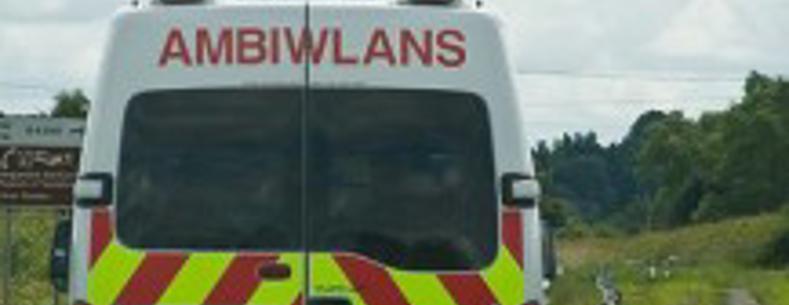Background to the new clinical response model
Ambulance services in Wales have seen significant and recent change. In April 2013 the Strategic Review of Welsh Ambulance Services (the McClelland review) set out a number of recommendations for improving services, including proposals for new ways of monitoring performance on ambulance response times.
Following on from the McClelland review, from 1 October 2015 Wales Ambulance Services NHS Trust (WAST) implemented a new clinical response model for a 12 month pilot period, which was later extended for an additional 6 months. It was intended that during this trial, only the most serious calls, categorised as Red (immediately life-threatening), have had a response time target. All other calls would receive an appropriate response, either face-to-face or telephone assessment, based on clinical need. The new model has three categories of calls:
- Red: Immediately life-threatening (someone is in imminent danger of death, such as a cardiac arrest). The target is for 65% of emergency responses to arrive within 8 minutes;
- Amber: Serious but not immediately life-threatening (patients who need treatment delivered on the scene and may then need to be taken to hospital);
- Green: Non urgent (can often be managed by other health services) and clinical telephone assessment.
The new clinical response model has also been supported by the development of a series of Ambulance Quality Indicators (AQI), which are published on a quarterly basis and contain a more detailed set of performance measures, including patient experience and clinical outcomes.
Performance against the new targets
The most recent statistics on ambulance response times published by the Welsh Government are for January 2017; Table 1 below shows the trends and Table 2 sets out the figures for January 2017 by Local Health Board area:
Table 1: Average red calls per day, and the percentage arriving at the scene within 8 minutes, Wales
Table 2: Emergency ambulance responses in Wales to red calls, January 2017
The performance data for January 2017 also shows that:
- There were 39,864 emergency calls, an average of 1,286 per day, 4.3% down on the daily average for December 2016.
- Of the total, 1,980 (5.0%) were red, 26,456 (66.4%) were amber and 11,428 (28.7%) were green.
- 75.4% of emergency responses to red calls arrived within 8 minutes, above the target of 65%, but down from 75.8% in December 2016.
- Performance ranged from 66.2% in Powys to 79.5% in Cardiff & Vale.
Ambulance services inquiries during the Fourth Assembly
In 2015 the Fourth Assembly’s Health and Social Care Committee undertook a short inquiry into the performance of Welsh ambulance services; later in the same year the Committee held additional sessions to examine what progress had been made in response to its original recommendations. This was shortly after the pilot of the new clinical response model had commenced.
As a result of the follow-up inquiries, the Committee wrote to Welsh Government welcoming the fact that the all-Wales target for emergency response times had been met for the first month of new trial model. However, the Committee was concerned that significant regional variations persisted and stated that it would like to see these addressed as a matter of priority and that it expected to see sustained progress in relation to response times at the local and national level.
In his response, the Deputy Minister for Health welcomed the Committee’s recognition of the progress achieved since the initial 2015 inquiry and stated that:
I am proud that we took a step forward for patients by implementing a clinical response model pilot intended to prioritise patients who need an immediate clinical intervention. The pilot is designed to enable ambulance clinicians and resources to be despatched appropriately based on clinical need.
The response also noted the progress made month-on-month against the targets and the publication in January 2016 of the first set of the new AQIs. The Deputy Minister also noted in further correspondence to the Committee that:
During the year-long clinical response model pilot, the AQIs will be published quarterly to allow a clearer understanding of trends and the impact of seasonal variation, sitting alongside the monthly publication of ‘Red’ response times. I can only re-iterate that the way we are sharing key information on ambulance services in Wales makes us the most transparent country in the UK and among the most transparent worldwide.
Review of the clinical response model
The Cabinet Secretary for Health, Wellbeing and Sport set out in a Ministerial Statement in September 2016 that the final evaluation report of the clinical response model was due in December 2016 and that he would make a final decision on the future of the pilot by the end of March 2017.
An interim report on the model received by the Emergency Ambulance Services Committee (EASC) in September 2016 had identified no significant areas of concern. The EASC has also received an update on the draft final evaluation report which indicates that:
…the removal of time based targets for the majority of calls has allowed for more efficient dispatching of ambulance resources, increased opportunities for hear and treat; and supported timely responses to patients with the greatest clinical need.
The EASC was due to have sight of the final evaluation report in January 2017, prior to its submission to the Cabinet Secretary for Health Wellbeing and Sport, who is due to make a statement regarding the evaluation to Plenary on 28 February 2017.
Image Source: Image from Flickr by Diluvienne. Licensed under Creative Commons.
Article by Paul Worthington, National Assembly for Wales Research Service








